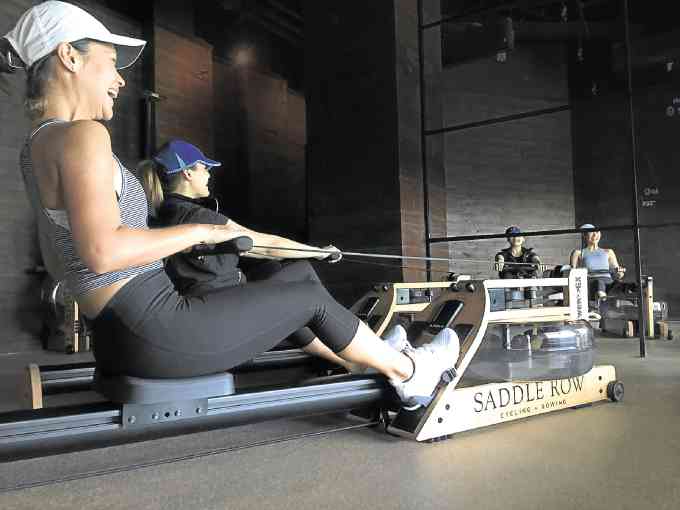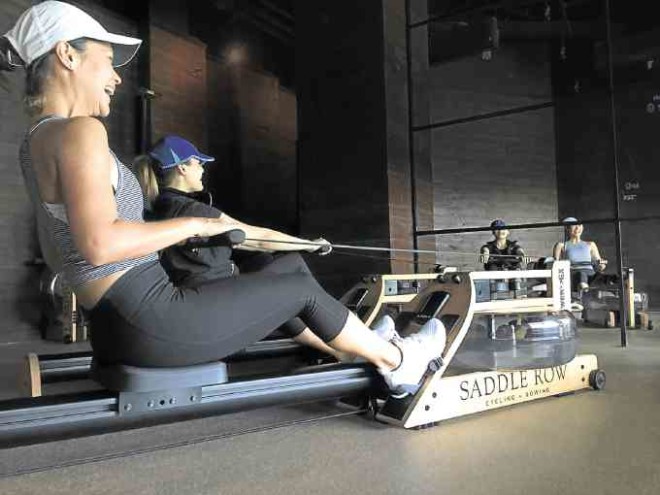
It’s a low-impact, full-body workout that torches calories.
Dubbed as the next boutique workout craze, indoor rowing is growing a steady cult following in the metro. In the US, its popularity is said to have been spurred by the indoor cycling fatigue.
In the country, its rising popularity is credited to Saddle Row. The indoor cycling and rowing studio was the first to introduce pumped-up rowing classes featuring Water Flywheel, a machine that replicates the physical dynamics of a moving boat, giving students a realistic rowing experience.
Among its first students is Sen. Pia Cayetano, who snagged first place during the studio’s monthly “regatta” last July. Recently, celebrity Gretchen Barretto tried it out, and quickly posted photos and videos of her workout on Instagram.
Ultra-fun classes
And who can blame them? The classes are ultra-fun—far from the “rowing” experience you get in a regular gym—and a single stroke uses 85 percent of your muscles. It’s not just your legs doing all the work; your upper body is moving, as well, allowing you to get a full-body workout like no other.
“The best thing about rowing is that it’s low-impact training, such that even those with injuries and bad knees, or those severely out of shape, can join the class. With the rowing machine you’re going linear, moving with gravity, not against it,” says Bernardo Siaotong, rowing instructor, certified cycling instructor and registered dietician at Saddle Row, 2/F Serendra, Bonifacio Global City, Taguig City.
Saddle Row opened last year offering cycling classes at first, then rowing classes this year. The concept is similar to spinning classes—rowers move to the beat of rock, pop, R&B music. But that’s about it when it comes to similarities.
Rowing demands a broader range of motion and works against resistance in two directions. Indoor cycling, meanwhile, works only against one direction of resistance. Simply put, rowing is a full-body strength-training and cardio workout rolled into one.
Mimic real-life rowing
Since the rowing machines mimic real-life rowing, the less force you put in, the less force you’ll feel on the rowing machine. Exert more effort and you get greater results—just like rowing on water.
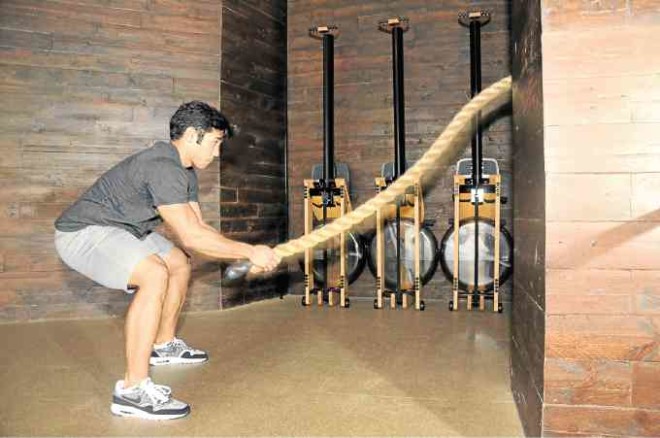
Rowing is said to be the most physically taxing of the machines used for improving aerobic conditioning, but at Saddle Row, says Siaotong, the classes are designed in such a way that beginners can workout alongside elite athletes.
“We don’t pressure students to go beyond what they can handle. Our goal is for them to get better with each class. We may push them to go just a little further because even the smallest improvement is still an improvement. Over time, that person will become confident knowing he can always pass the obstacles, pass that plateau and move further up,” he said.
Rowing works nearly every muscle with every stroke. The legs work to propel the body backward while the arms and back work to pull the handlebar toward the chest. The core works by keeping the body stable.
Saddle Row offers three kinds of classes: Crew, an all-rowing class (90-95 percent rowing) featuring basic rowing skills like pace setting, dead sprints, long distance; Finesse, a “land and water” class featuring a lower intensity version of circuit training, suitable for those who want to mix rowing with land exercises like push-ups, bands and battle ropes; and Circuit, a high-intensity version of the Finesse workout with off-rower strengthening and stability sessions.
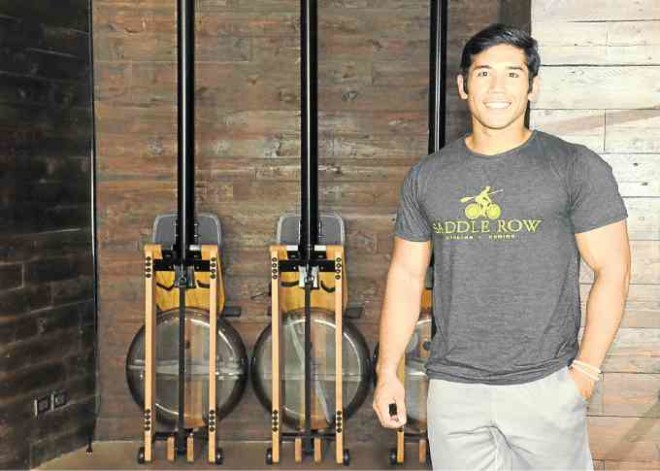
Siaotong says there’s also a Bridge to Circuit class, somewhere in between Finesse and Circuit, ideal for those who want to transition to a high-intensity workout.
“We do everything on bands or the rowing machine. We don’t use weights. While there are many positive effects of weightlifting, the negative, we believe, outweighs the positive,” he says. Free weights, for example, have been known to cause numerous injuries.
One of the benefits of rowing is strength training that results in fat loss. Once you’re finished with strength training, your muscles are still working, Siaotong says, burning extra calories even when you’re no longer working out.
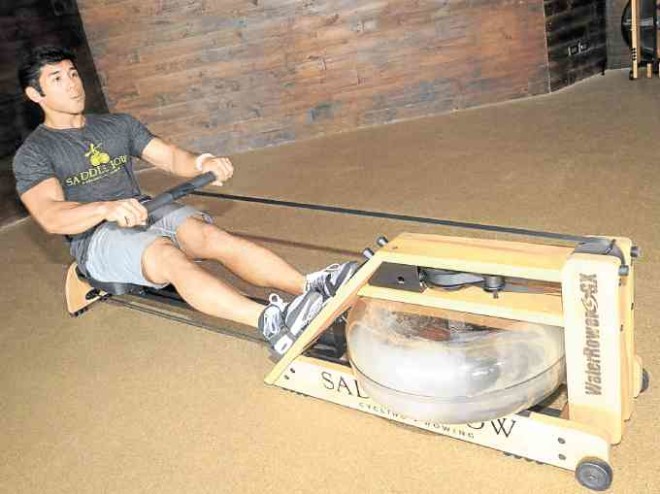
“Your body is trying to repair itself. The more muscle mass you have and the stronger you get, the more you burn calories while you’re not working out. It raises your metabolism because your body needs those extra nutrients,” Siaotong says.
Spinning might pale in comparison to indoor rowing when it comes to delivering a full-body workout, but Siaotong says what’s important is to do something you enjoy—otherwise, the workout becomes a burden.
“The sound the water makes while rowing has a calming and soothing effect. That’s probably one of the reasons some people are drawn to indoor rowing. It feels like you’re really out there with nature,” he says.
Visit www.saddlerowph.com

